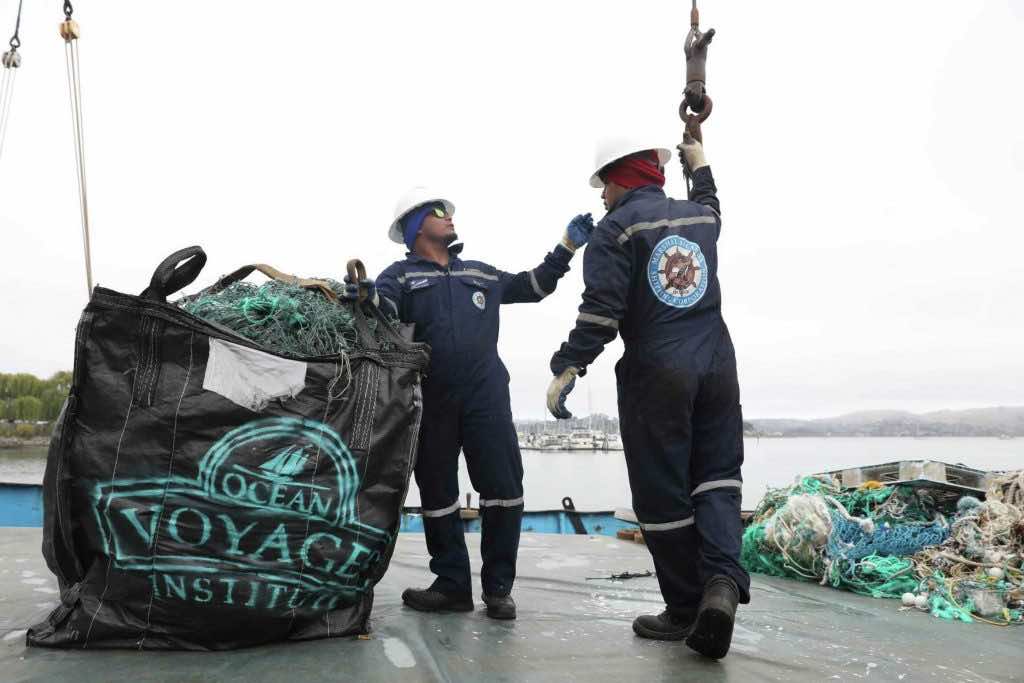This week, more than 100,000 kg of “mysterious floating plastic objects” were pulled out of the Great Pacific Garbage Patch, shocking area environmentalists and government officials.
On Wednesday, the 132-foot sailing cargo ship from the nonprofit Ocean Voyages Institute gathered more than 96 tons of ocean debris — ranging from fishing nets to kids’ plastic toys — during its cleanup voyage from Honolulu through the patch, more formally known as the North Pacific Gyre.
The ship’s crew recovered the garbage haul over 4,600 nautical miles in the vast Pacific area between Hawaii and San Francisco, which is prone to accumulations of swirling debris — what the ship’s captain, Locky MacLean, described as “mind-boggling miles of whirlpooling, gyrating plastic debris floating around.”
“It almost looks like a fiberglass or plastic tank that came out of a fishing vessel,” captain Locky MacLean told the Chronicle.
According to the Fijian government, the Great Pacific Garbage Patch (GPGP) represents a severe threat to Pacific nations. However, Minister Mahendra Reddy said that his country generated less than 1% of the “world’s mismanaged plastics and is not a big contribution to the environmental crisis.”
However, he stated that Fijians suffer from the damaging consequences of plastic manufacturing, consumption, and inefficient management.
A large portion of the world’s garbage ends up in the ocean. The Great Pacific Garbage Patch, located between the American states of Hawaii and California, is the most well-known of these ocean plastic centers.
Ocean Cleanup, a non-profit organization, reported a record sweep of 100,000kg of garbage from the ocean in the last 45 days, which is more than the combined weight of two Boeing 737-800s. In addition, a total of 101,353kg of plastic was collected throughout the cleanup. Ocean Cleanup expressed gratitude to the ship’s crew and global supporters in a statement.
“Added to the 7173kg of plastic captured by our previous prototype systems, the Ocean Cleanup has now collected 108,526 kg of plastic from the GPGP,” the statement said.
“But more work is needed to address the problem.”
According to Greenpeace, the amount of waste in the Patch is increasing since much of it is not biodegradable.
According to the environmental group, many plastic goods degrade into small particles known as microplastics. These, combined with more oversized items such as fishing gear and shoes, give the water the appearance of a cloudy soup.
“The Plastic Free July has been running since 2011, and there are some simple actions we can take to reduce our personal plastic footprint.”
The Pacific is heavily dependent on the environment, and plastic waste is now wreaking havoc on the region. Every year, between 1.15 and 2.41 million tonnes of plastic debris enter the ocean via rivers, according to researchers.
“We’ve really used the ocean as a garbage pail,” Mary Crowley, founder and president of the Ocean Voyages Institute, told the Chronicle, the mistreatment of a “beautiful ocean wilderness.”

